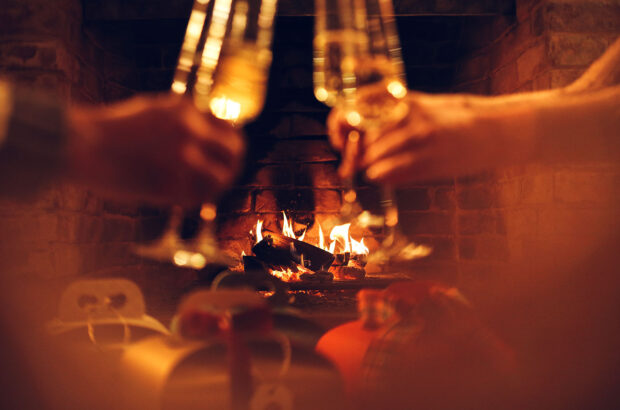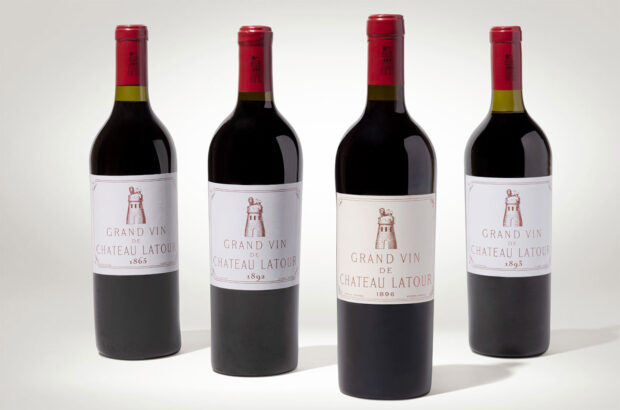It is now nearly three centuries since the ‘connoisseurs’ – all right, aristocratic drunks – of fashionable London decided that the brandies from the valley of the Charente River in western France were the finest in the world. Not all of them, though: the region’s products were divided into three classes.
It is now nearly three centuries since the connoisseurs – all right, aristocratic drunks – of fashionable London decided that the brandies from the valley of the Charente River in western France were the finest in the world. Not all of them, though: the region’s products were divided into three classes. They were headed by ‘Champagne brandy’ from the ‘Champagnes’ – the chalky slopes south of the river opposite the little town of Cognac – as well as what are now the ‘Fins Bois de Jarnac’ north of the even smaller town, a few miles east of Cognac. Then as now, it was the combination of the capacity to age, plus the complexity of the aromas and flavours of the drink, that made – and make – it unique.
Not much has changed since then, except that the region entitled to produce cognac has grown and grown, reaching 110,000ha (hectares) in 1976. Even now, at 78,000ha, it remains the single biggest vineyard devoted exclusively to white grapes in France. But cognac remains the best proof of the French notion of terroir: the wines are all made from the acidic, neutral Ugni Blanc grape variety, and are fermented and distilled in exactly the same way, in the same vats and pot stills. Yet within a few years the sub-regional differences start to show. Within 20 years, only a few brandies from outside Grande Champagne are capable of improvement.Of course there are other fine cognacs, notably the particularly nutty brandies from the Borderies – a rectangle of clay soil north of Cognac itself – and the elegant, floral brandies from the best of the vast Fins Bois region. But only those from Grande Champagne develop rancio – a richness reminiscent of the best Christmas cakes, nuts, candied fruits and all things unique to the best cognacs. And then only after they have matured in oak casks for 20 years or more. But age is not the only factor. Indeed many truly aged cognacs are deeply unsatisfactory. Unfortunately, three of the big four firms who dominate Cognac – Hennessy, Martell and Courvoisier – have historically downplayed the distinctions between the crus. Only Rémy Martin has insisted on selling brandies only from the Champagnes.In addition, the Cognacais have ignored the importance of precise age, mention of which on the bottle is still banned. The only exception is the handful of vintage cognacs on the market. Until recently, these were confined to the ‘Early Landed Late Bottled’ cognacs imported young in casks and matured in damp cellars in London and Bristol.Today, fortunately, there are several smaller firms and producers challenging the Big Four. Equally encouragingly, the Cognacais have finally admitted that the cheaper cognacs are best mixed, with ice, soda, fizzy water – the salty Perrier is ideal – or the driest of ginger ales. (Unfortunately they are also promoting cognac and tonic, to my mind the most unsuitable mixer on the market.) Bartenders, too, are discovering that cognac is a far more satisfactory, deeper, more complex basis for cocktails than any other spirit.Unfortunately, the brandies above XO level are expensive – through a combination of rarity and the cost of stocking the brandies for decades. It is thus perhaps prudent to follow the advice, given two centuries ago, of the French minister and ambassador Abbé Talleyrand, who advised a friend on how to drink cognac: ‘Take your glass in the hollow of the hand, warm it, and rotate it with a circular movement so that the spirit gives off its aroma. Then carry it to your nostrils and inhale. And then, my dear sir, put down your glass and talk about it.’
Guide to Cognac Houses
Courvoisier
Has a long-held reputation for producing brandies which are consistently rich and round.
VS: Rich, typical. Excellent for mixing because of its strength. £22.37; DrO
Exclusif VSOP: Rich enough to show candied fruits, truffles and Borderies nuttiness. N/A UK. +33 5 45 35 55 55
Initial Extra GC and Borderies: Displays a very natural richness with a feel of sous bois. £600; ADo
Delamain
One of the historic greats, still buying only from Grande Champagne and only brandies at least 10 years old. The resultant cognacs have a unique elegance
Pale & Dry: Floral, delicate, long. £55; BBR
Très Vieille Réserve de la Famille: Classic GC with flowery overtones. Long, complex. £180; Men
Hennessy
One of the two dominant forces in cognac since the French Revolution and today the unquestioned world leader. Its brandies combine richness with structure.
VS: Nice, warm, round grapey nose and palate, relatively mature, typical traditional Hennessy. £18.99; Odd
XO: Very rich and long, but not too heavy. Lots of new wood. £89.99; Unw
Private Reserve: As the name indicates, originally blended for the Hennessy family. Elegant and long, made from 20– 30-year-old brandies. £110; Har, HvN, Sel
Hine
British favourites for nearly two centuries, many of its brandies are ‘Early Landed, Late Bottled’
Antique: Combines depth and balance with a touch of rancio.
£75; F&M, Har, Odd, Sel, Tan
Also offers a couple of single vintages, an early-landed and an older one matured in Jarnac as well as a vintage pack with three 20cl bottles from 1960 1975 and 1983. BBR, F&M, Har, Wai
Leopold Gourmel
Starting off floral, then fruity, then getting more complex and spicy as they age.
Age des Epices: 22yrs: Oily, grapey, peppery, with a lovely roundness and complexity. £80; F&M
Martell
An unusually dry style.
VS: Floral nose, good concentration £17.99; widely available
Cordon Bleu: The first mass selling upmarket cognac. Very concentrated Borderies style. £75; N&P
Pierre Frapin
Exclusive seller of brandies from the biggest single estate in the heartland of Grande Champagne.
Chateau de Fontpinot: a festival of fruity, floral aromas and tastes. £64.99; BFV, DaV, F&M, Han, Har, Hnd
Ragnaud Sabourin
Family based on the sacred slopes above Segonzac in the heart of Grande Champagne.
Fontvieille: 35 yrs. Superbly balanced, elegant, long, rancio but not heavy. £80–90; F&M, Har, Hax, Hsl, P&S
Florilege: 45 yrs. Some of the purest rancio around. Lovely fruit cake feel on the finish. £120–130; CPy, Gau, Hed
Remy Martin
The only major firm still controlled by a single family. All its cognacs enjoy some fruitiness, and all come from the Champagnes.
Grand Cru VS Petite Champagne: Excellent aromatic power, round and fruity, an ideal mixer for cocktails. £18.99; Asd, Sai
VSOP: Still the standard by which all others are measured. Up to 15yrs – spicy, bread, candied fruit. £25.99; widely available
XO Excellence: 85% GC, 10–35 years old. Rich candied fruits, apricot, prune so concentrated that it’s okay to add ice. £90; F&M, Har, HvN
A Tesseron
Traditionally a wholesaler holding the region’s largest stock of old cognacs
Lot 53 Topaz: Up to 50 years old but seems younger, elegant with delicious light rancio. £49.50; C&B
Domaine St Seurin: A single-vineyard cognac. A most subtle, light and floral cognac. £42; C&B
Nicholas Faith is the author of Cognac (Mitchell Beazley)

What’s the difference between Cognac and Armagnac? Ask Decanter
How do you tell Armagnac apart from Cognac?
The complexities of Cognac
A blend of many eaux de vie, some more than a century old, Cognac is far more complex than you

Napoleonic era Cognac sells for 220,000 pounds
A candidate for world's most expensive Cognac?







